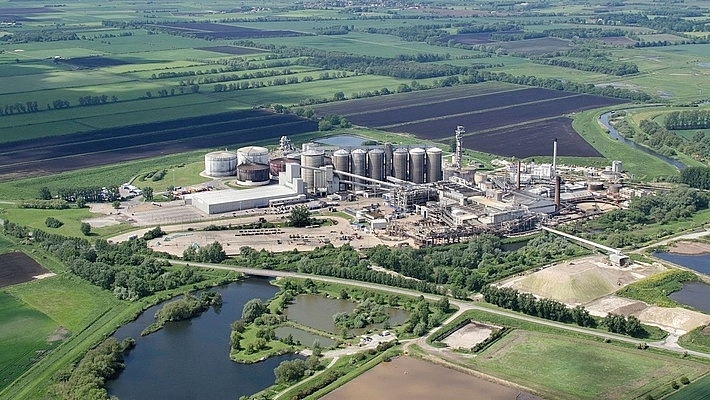POSCO wins $72.33 million contract for Long Son Petrochemical Complex
 |
| POSCO E&C sets its solid foot in Long Son Petrochemical Complex |
The South Korean builder will work on the 2.31 million square metre site on Long Son Island in the southern province of Ba Ria-Vung Tau. Work on the project, won from Vietnam Long Son Petrochemical (LSP)—the investor of LSPC—will begin next month with the completion date set at September 2020, the company said.
Previously, POSCO E&C in January signed a KRW750 billion contract to build storage tanks and a wharf facility that will serve the petrochemical complex.
POSCO E&C announced signing a contract with LSP, wholly owned by Thailand's SCG, for the construction of a wharf facility worth $680 million in Ho Chi Minh City to serve the Long Son complex.
| LSPC is located in Long Son commune of Ba Ria-Vung Tau province, 100 kilometres from Ho Chi Minh City. This integrated petrochemical complex will have a total olefin production capacity of 1.6 million tonnes per year. |
Accordingly, POSCO E&C will build 28 petrochemical storage tanks with a total storage capacity of 300,000 tonnes at the petrochemical complex, raw material transfer pipelines, a quay for raw material products, and marine facilities. The builder aims to complete them in 2022.
This order seems more meaningful in light of the remarkable synergies POSCO E&C generated in its first year in Vietnam. POSCO’s work includes Cai Mep International Port and an exclusive port for Vung Tau Cold Rolling Mill.
Back to LSPC, in February, LSP officially kicked off its long-awaited LSPC after more than ten years of development.
In late May, SCG reached an agreement to buy PetroVietnam's 29 per cent in LSPC, leaving it king of the hill.
This step once more confirmed SCG's determination to implement the petrochemical complex that was delayed for more than 10 years.
LSPC is located in Long Son commune of Ba Ria-Vung Tau province, 100 kilometres from Ho Chi Minh City. This integrated petrochemical complex will have a total olefin production capacity of 1.6 million tonnes per year.
The complex is designed to produce various petrochemical products, including essential plastic materials such as polyethylene, polypropylene, and other products in excess of two million tonnes per year, enabling it to substitute imported polyolefin products. Non-petrochemical supporting infrastructure, such as a deep sea port and other facilities, are also included.
What the stars mean:
★ Poor ★ ★ Promising ★★★ Good ★★★★ Very good ★★★★★ Exceptional
Related Contents
Latest News
More News
- Ho Chi Minh City hits $8.37 billion in FDI (December 29, 2025 | 08:28)
- Tax sector wraps up 2025 and sets priorities for next year (December 25, 2025 | 14:00)
- Heavy industries set for pilot greenhouse gas quotas (December 25, 2025 | 10:00)
- $250 million deal targets women-owned SMEs, sustainable agriculture (December 22, 2025 | 17:40)
- UOB sees Vietnam growth easing in fourth quarter (December 22, 2025 | 17:39)
- Government moves to establish International Financial Centre (December 21, 2025 | 21:00)
- Vietnam's IFC to target global investment flows (December 21, 2025 | 18:00)
- Ha Tinh breaks ground on major Vingroup industrial and energy projects (December 19, 2025 | 18:24)
- EVN launches major power infrastructure projects nationwide (December 19, 2025 | 18:17)
- VAL inaugurates second production line to meet domestic animal feed demand (December 19, 2025 | 16:37)

 Tag:
Tag:

























 Mobile Version
Mobile Version